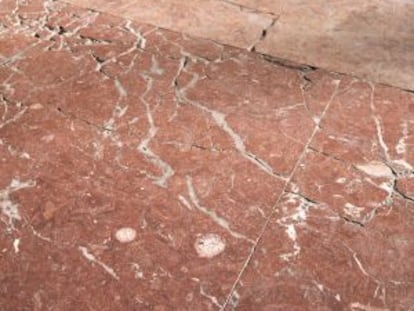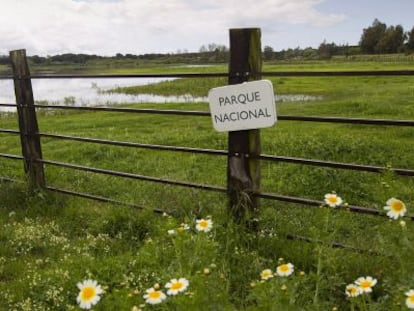Welcome to the Anthropocene: “We have now changed the Earth’s cycle”
Spanish scientist says proof of man’s impact can be found in the the northern city of Bilbao

If you were born before 1950, news that the Earth has moved into a new geological era called the Anthropocene – the Age of Man – meaning your life has spanned two different geological ages, may simply make you feel even older than you already do.
After seven years of research, an official expert group made up of 35 scientists, environmentalists and a lawyer, last month presented their recommendations to the International Geological Congress in Cape Town, ushering in the Anthropocene as the latest of the planet’s many ages.
Proof the world has changed forever can be found in the estuary of the Spanish northern port city of Bilbao
They decided to peg the change to the spread of radioactive plutonium waste in the middle of the 20th century left in the wake of atomic bomb tests, making 1950 the definitive date of the end of the Holocene. Although according to Alejandro Cearreta, the only Spaniard on the scientific team, 1952 would be more exact as the moment radioactive isotopes settled across the planet.
“We have already changed the planet,” he continues, adding: “The Anthropocene began the moment humans managed to change the life-cycle of the planet, taking it out of its natural range of variables.”
Assigned the task of determining whether or not we have left the Holocene behind us forever, the scientific team agreed that the arrival of the Anthropocene must be reflected geologically in the layers of the Earth’s rock as a permanent reference for future scientists.
Cearreta, who teaches at the University of the Basque Country, says that definitive proof can be found in the Tunel Boca beach in the estuary of the Spanish northern port city of Bilbao, where a seven-meter-deep strip of industrial sediment accumulated over the last century was recently unearthed.
Cearreta believes that the advent of the Anthropocene is indicative of our failure as a society
In order to move from one geological age to another, he says, there has to be unmistakable global and synchronic signs of planetary change, such as the sediment deposits in Bilbao. This is why he and his colleagues dismissed the original idea of placing the start of the Anthropocene to the onset of the Industrial Revolution in 1800 – the evidence at that time was far from uniformly distributed.
“Since the 1940s, waves and ocean currents have been helping to form a cement beach at the foot of the Getxo cliffs,” says Cearreta.
An earlier example would be the extinction of the dinosaurs 66 million years ago at the end of the Cretaceous period, defined by a spike in sediments around the world of the metal iridium, which was dispersed from the meteorite that collided with Earth causing the end of the dinosaur age.
Detection of the latest cyclical change in the planet’s behavior has been triggered by plastics, greenhouse emissions and industrial waste that have tampered with ecosystems, diminishing biodiversity and increasing the acidification of our oceans.
Many of these changes have geological consequences, some of which are irreversible, says Cearreta. “It is a scientific fact that is being registered geologically,” says Cearreta. “The Anthropocene evidence will be there forever.”
As with climate change, this has inevitable political repercussions, says Cearreta, who believes that the advent of the Anthropocene is indicative of our failure as a society.
“Is it good or bad that dinosaurs died off? We are not here to judge, but now there has been indisputable change in the Earth’s system,” says Cearreta, who admits his camp were under extraordinary pressure during the voting process in South Africa. “It was slightly overwhelming. We are not used to generating this kind of interest,” he says.
In any event, the team’s decision will not appear in textbooks until a number of other official bodies ratify it formally over the next few years. Decisions in this field are taken at a geological pace, jokes Cearreta – there was no formal timeframe for the Quaternary Epoch that started 2.5 million years ago until 2009. And they are yet to identify the “golden spike,” a mark in the Earth’s rock that serves as a reference point for the start of a new global geological period.
English version by Heather Galloway.
Tu suscripción se está usando en otro dispositivo
¿Quieres añadir otro usuario a tu suscripción?
Si continúas leyendo en este dispositivo, no se podrá leer en el otro.
FlechaTu suscripción se está usando en otro dispositivo y solo puedes acceder a EL PAÍS desde un dispositivo a la vez.
Si quieres compartir tu cuenta, cambia tu suscripción a la modalidad Premium, así podrás añadir otro usuario. Cada uno accederá con su propia cuenta de email, lo que os permitirá personalizar vuestra experiencia en EL PAÍS.
¿Tienes una suscripción de empresa? Accede aquí para contratar más cuentas.
En el caso de no saber quién está usando tu cuenta, te recomendamos cambiar tu contraseña aquí.
Si decides continuar compartiendo tu cuenta, este mensaje se mostrará en tu dispositivo y en el de la otra persona que está usando tu cuenta de forma indefinida, afectando a tu experiencia de lectura. Puedes consultar aquí los términos y condiciones de la suscripción digital.
More information
Últimas noticias
Most viewed
- Why we lost the habit of sleeping in two segments and how that changed our sense of time
- Trump’s obsession with putting his name on everything is unprecedented in the United States
- Pablo Escobar’s hippos: A serious environmental problem, 40 years on
- The Florida Keys tourist paradise is besieged by immigration agents: ‘We’ve never seen anything like this’
- Charles Dubouloz, mountaineering star, retires at 36 with a farewell tour inspired by Walter Bonatti











































